If you’ve ever felt a cold draft sneaking in during winter or noticed every little noise from outside, you’re not alone. I’ve felt it too. No matter how much I bundled up or turned on the heat, something always felt off. That’s when I discovered exterior storm windows, and honestly they made a huge difference.
These windows add an extra layer of protection to your home. They keep the bad weather out and the comfort in. They also help save energy, which means lower bills and a cozier space year-round. Whether it’s strong winds, outdoor chatter, or shifting temperatures, storm windows block it all.
The moment I installed them, my room felt quieter and warmer. I didn’t realize how much outside air had been slipping in until it stopped. And within a few months, my heating costs dropped too.
So, if you’re tired of dealing with drafts or outside noise, you’re in the right place. Let’s dive in I’ll walk you through everything you need to know about exterior storm windows, how they work, how to choose between wood vs vinyl windows, and even where to get the right window replacement parts if you ever need them.
Table of Contents
What Are Exterior Storm Windows?
Exterior storm windows are extra panels that go over your existing windows from the outside. Think of them like a strong, invisible shield that guards your home from whatever’s happening outside.
They’re made to improve comfort, lower energy use, and make your space quieter all without replacing your current windows.
Here’s what makes them awesome:
- Act as a protective layer
They block wind, rain, dust, and temperature shifts before they reach your main windows. - Boost insulation
That extra layer of air between the storm window and your real window traps heat in the winter and keeps it out in the summer. - Work with any home
Whether your house is old, new, big, or small exterior storm windows fit right in. - Save on energy bills
According to the U.S. Department of Energy, these windows can reduce heating and cooling costs by 10% to 30%. That’s a serious cut in monthly expenses! - No full replacements needed
You don’t have to tear out your old windows. Storm windows are installed over them, which saves time and money. - Cut down outside noise
Hear less noise from traffic, neighbors, or outdoor activity. More peace, more focus, better sleep. - Affordable comfort
A small investment with long-term rewards. You’ll feel warmer in winter, cooler in summer, and more relaxed every day.
So instead of cranking the heater or wearing three layers indoors, install exterior storm windows. They do the hard work while you stay comfy and chill.
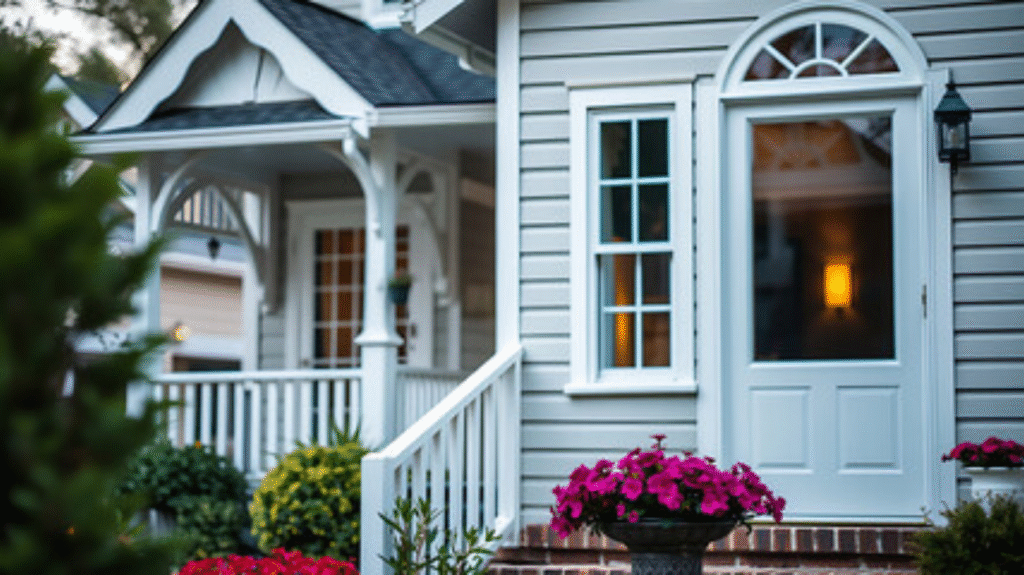
Why Should You Even Care?
Let me put it this way why freeze in winter or sweat in summer when you don’t have to?
I used to think a blanket would fix the cold draft in my room. Nope. Turns out, that air was slipping in through the windows. Once I added storm windows, the difference was night and day.
Still wondering if they’re worth it? Let’s break it down.
Benefits of Exterior Storm Windows
- Energy Efficiency: They trap indoor air and keep your house warmer in winter and cooler in summer.
- Noise Control: Say goodbye to noisy streets and barking dogs.
- Protection: Your original windows last longer because storm windows take the damage.
- Cost-Effective: Installing them is cheaper than full window replacement.
- Looks Better: Many designs actually boost your home’s appearance.
So, yeah, they do more than just sit there. They actually work hard.
My Experience with Exterior Storm Windows
I live near a busy street. Mornings were the worst. Honking cars and loud engines woke me up every day.
A friend told me to try exterior storm windows. I didn’t expect much. But after installing them, my room became quiet like library quiet.
It also felt warmer in winter. No more thick socks and three hoodies indoors.
Wood vs Vinyl Windows: Which One Should You Choose?
When I started looking into storm windows, I kept running into the debate wood vs vinyl windows. At first, it was kind of confusing. I mean, a window is a window, right?
Not really.
The material you choose makes a big difference in looks, price, and long-term care. So here’s what I learned (and experienced) that can help you pick the right one.
Wood Windows
If you like that classic, natural look, wood in windows is where it’s at. It feels warm, cozy, and even fancy.
Pros of Wood Windows
- Elegant style – Wood gives your home that high-end, traditional vibe.
- Custom options – You can paint or stain them any color.
- Great insulation – Wood is a natural insulator, so it keeps indoor temps stable.
- Best for older homes – If you live in a historic home or something with character, wood windows just look right.
Cons of Wood Windows
- High maintenance – You need to paint, seal, or treat them every few years.
- Can rot or warp – If they’re not taken care of properly, moisture can damage them.
- Expensive – Usually more costly upfront than vinyl.
I love the look of wood, but I’ll be honest it’s a commitment. You can’t just install them and forget it. They need love and attention.
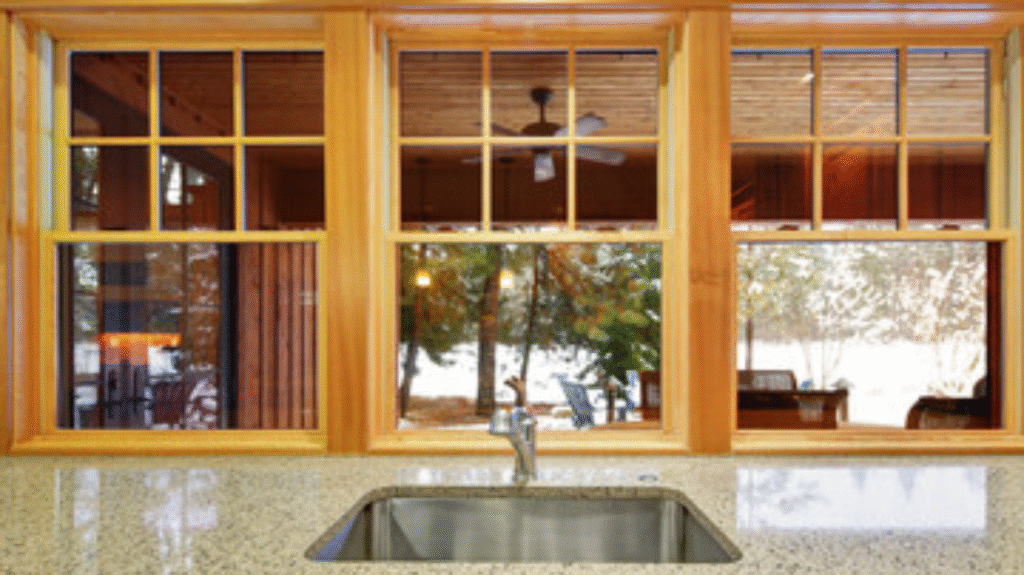
Vinyl Windows
Now, if you’re like me and want something that just works no drama, no fuss vinyl windows might be your thing.
Pros of Vinyl Windows
- Low maintenance – No painting, sealing, or worrying about rot.
- More affordable – Usually cheaper than wood, both in material and labor.
- Energy-efficient – Many come with insulated frames to save energy.
- Modern look – Simple, clean design that fits most newer homes.
Cons of Vinyl Windows
- Limited color choices – You’re often stuck with white or beige.
- Can’t repaint easily – What you buy is what you live with.
- Not as classic-looking – If you want that warm wood vibe, vinyl won’t give you the same feel.
I chose vinyl for my place because I didn’t want to deal with peeling paint or repairs. Plus, they fit my budget and I’ve been super happy with the results.
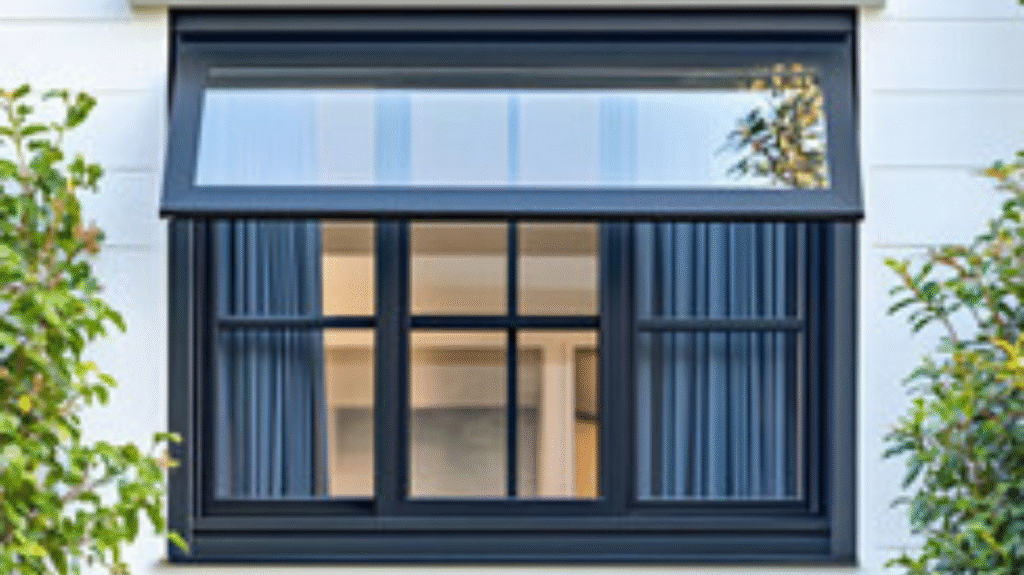
So, Which One Is Better?
Honestly? There’s no clear winner. It really depends on your style, budget, and how much maintenance you’re okay with.
- Pick wood windows if you love a natural, high-end look and don’t mind the upkeep.
- Pick vinyl windows if you want something affordable, efficient, and hassle-free.
Both types can work with exterior storm windows, so whichever you choose, you’ll still get that extra layer of protection and comfort.
Why “Wood in Windows” Still Matters
Some people think wood in windows is outdated too much work, too old-fashioned. I totally disagree.
If you ask me, wood has something that vinyl just can’t copy. It brings this natural, warm vibe to a room. Like the kind you feel in cozy cabins or old homes that have stories to tell. Every time I walk into a space with real wood windows, it just feels right like it’s giving the place a soul.
Here’s Why Wood Still Rocks:
- Timeless beauty – Wood looks rich and warm. It’s got texture, grain, and color that no plastic can fake.
- Custom style – You can paint it, stain it, or match it to your trim and furniture.
- Strong insulation – When sealed right, wood is one of the best natural insulators. It keeps your space warmer in winter and cooler in summer.
- Adds home value – Buyers still love wood. It shows care and adds that extra “wow” factor.
But Yes, There’s a Trade-Off:
- It needs attention – Wood can peel, chip, or absorb moisture if you ignore it. You’ll need to check it now and then.
- You’ll repaint or seal – Every few years, you’ve got to protect the wood to keep it looking great and lasting long.
- More expensive – It can cost more upfront than vinyl or aluminum.
Still, I think it’s worth it especially if your home already has wood frames. Sticking with the same material keeps everything looking smooth and consistent. Mixing wood and vinyl can sometimes look patchy.
And if you’re like me and enjoy making your space feel personal, wood gives you that creative freedom. You can change the color later, sand it down, restain it it’s flexible like that.
So yeah, it’s a bit more work. But sometimes, the best things are.
Finding the Right Window Replacement Part
When to Use Window Replacement Parts Instead of Buying New
Okay, so one of your windows isn’t working right. Maybe it won’t close properly, the lock is jammed, or the crank spins but does nothing. Do you need to replace the entire window?
Not always. And that’s the good news.
Most of the time, it’s just one small piece that’s causing the problem. That’s where window replacement parts come in. Instead of spending hundreds (or even thousands) on a new window, you can fix just the broken part for a fraction of the price.
Common Window Parts You Might Need:
- Locks – Keep your window secure and shut tight.
- Cranks – Help open and close casement or awning windows.
- Latches – Hold the sash in place when closed.
- Tilt Latches – Let you tilt your window inward for easy cleaning.
- Glazing Beads – Hold the glass securely in place within the frame.
- Pivot bars and shoes – Allow tilt windows to operate smoothly.
- Balances – Support the sash so it stays up when open.
Why Replacement Parts Make Sense:
- Way cheaper – Most parts cost between $5 and $25.
- Quick fixes – You don’t need a pro; many repairs take just 10–20 minutes.
- Eco-friendly – You’re fixing what you have, not throwing it all away.
- Keeps original windows – Especially useful if you have wood windows or historic designs you want to keep.
My Real-Life Example
I once had a window in my room that wouldn’t lock. Super annoying. I thought I needed to replace the whole thing. But a quick search online helped me find the exact latch I needed for only $5. I ordered it, followed a YouTube video, and had it fixed in under 15 minutes.
Seriously that one small fix made my window feel brand new.
Pro Tip: Take Photos First
Before buying any part, take a clear photo of the broken piece. This makes it much easier to match it when searching online or asking for help. You can even send the photo to sites like SWISCO window parts (more on that next), and they’ll help you identify the right part.
Where to Find Window Parts: SWISCO Window Parts
One site I totally recommend is SWISCO window parts. They’ve got tons of stuff even for older windows that are hard to find parts for.
Their support is helpful too. You can send a picture of the part you need, and they’ll help you find a match.
I used SWISCO to fix my grandma’s window lock last summer. Took me 10 minutes and saved her hundreds.
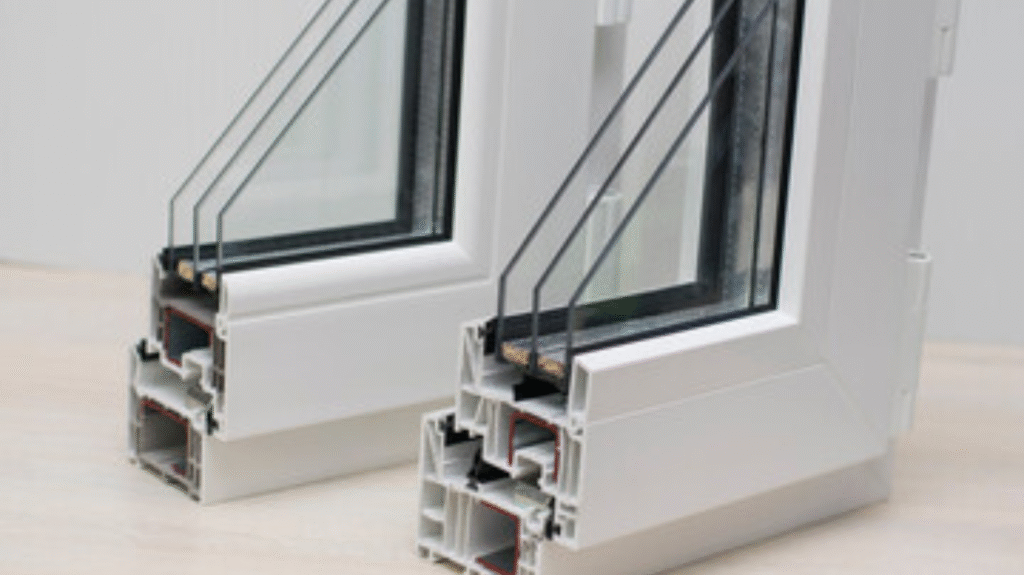
Are Storm Windows Better Than New Windows?
Short answer? Sometimes, yes.
Exterior storm windows cost less. They also offer solid protection and energy savings. So unless your main windows are completely ruined, storm windows are a great option.
Also, you won’t need to tear anything out or make a mess in your room. Just screw them on and you’re done.
How Much Do Storm Windows Cost?
Here’s a quick breakdown:
- Low-end storm windows: $50 to $100 each
- Mid-range: $100 to $200 each
- High-end or custom: $250 and up
Installation costs can vary. But on average, expect to pay $150–$300 per window including labor.
That’s way less than replacing a whole window, which can cost $500 or more!
Energy Savings You Can Count On
I mentioned this earlier, but here’s more detail.
According to ENERGY STAR, installing storm windows can save up to 20% on heating and cooling bills.
If your bill is $200 a month, that’s $40 saved every month. In one year, that’s $480 in your pocket.
Use that to buy concert tickets or new kicks you’ve earned it.
Easy Tips for Installing Exterior Storm Windows
You don’t need to be a pro, have fancy tools, or call someone for help. Installing exterior storm windows is easier than you might think. I did it myself, and if I can, you definitely can too.
It just takes a bit of measuring, patience, and basic tools. Here’s exactly what I didstep by step:
Step 1: Measure It Right
Use a measuring tape to get the exact width and height of your window opening.
- Measure from edge to edge (not just the glass).
- Measure in three places top, middle, and bottom and use the smallest number.
- Do the same for height left, center, and right.
Why it matters: Even a half-inch mistake can leave gaps that let in air and moisture. Always double-check your numbers.
Step 2: Choose Your Material
Storm windows usually come in wood, vinyl, or aluminum.
- Wood: Classic look, great insulation, but needs maintenance.
- Vinyl: Affordable, low-maintenance, fits modern homes.
- Aluminum: Lightweight, durable, and weather-resistant.
My tip: I picked vinyl because it was cheaper and easy to manage. But choose what fits your home’s look and your budget.
Step 3: Order the Perfect Fit
Once you have your measurements, don’t just guess or “eyeball” it.
- Order the exact size from a local supplier or online store.
- You can even upload your dimensions on some websites, and they’ll custom-make it for you.
Pro tip: Check return policies in case something doesn’t fit right.
Step 4: Clean the Frame
Before installing, wipe down the window frame with a damp cloth.
- Remove dust, cobwebs, and loose paint.
- A clean frame helps the storm window seal better and last longer.
Quick fix: I used a vacuum with a brush attachment and it worked great.
Step 5: Install the Window
Now it’s time to attach your storm window.
- Hold the window in place (you might need help for bigger ones).
- Line it up so it fits snugly inside the frame.
- Use a drill or screwdriver to screw it in starting at the top corners.
- Check the seal all around the edges to make sure there are no gaps.
tools? All I used was a basic screwdriver and a small step stool.
Time Spent: Less Than 30 Minutes
I installed mine in about 25 minutes and I was being careful. If you’ve never done it before, give yourself 30 to 45 minutes, just to be safe.
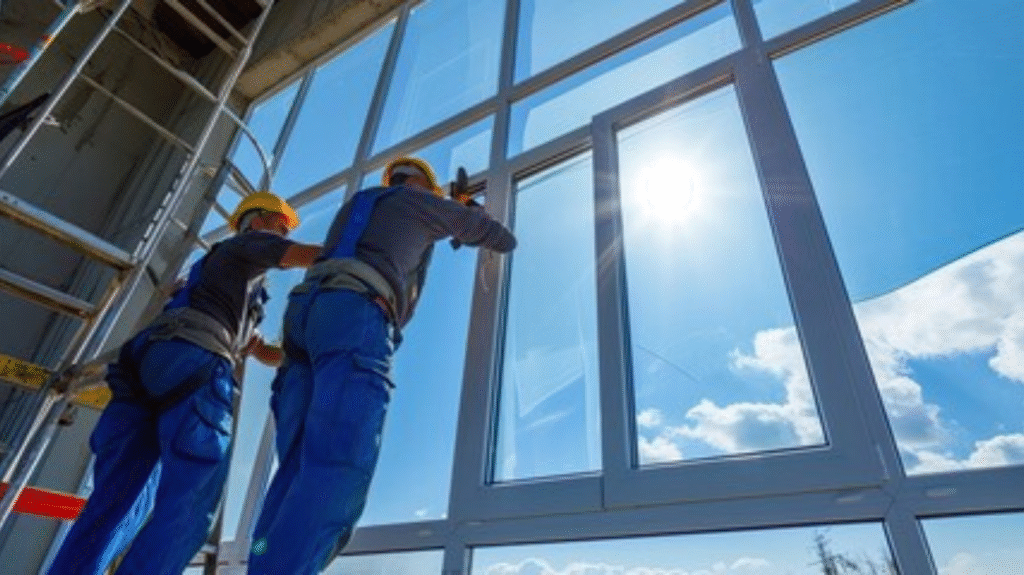
Keep It Clean and Lasting Longer
To get the most out of your exterior storm windows, clean them twice a year. Check for cracks or loose screws. If you see damage, fix it fast.
I keep a small tool kit for minor window fixes. Super helpful.
Should You Replace or Add Storm Windows?
Here’s a simple guide:
- Replace your windows if they’re broken, foggy, or rotted.
- Add storm windows if you want better insulation, noise control, or protection.
Most of the time, adding storm windows is all you need.
Final Thoughts: Exterior Storm Windows Are Totally Worth It
I never thought windows could make such a difference. But after using exterior storm windows, my room is quieter, warmer, and way more comfortable.
You don’t have to break the bank to feel cozy at home. Just make smart upgrades.
So whether you’re debating wood vs vinyl windows, fixing a window replacement part, or shopping from SWISCO window parts, start small.
Take it from me it’s worth every penny.
Let me know what your windows are like. Maybe I can help you figure out what works best for your space!
